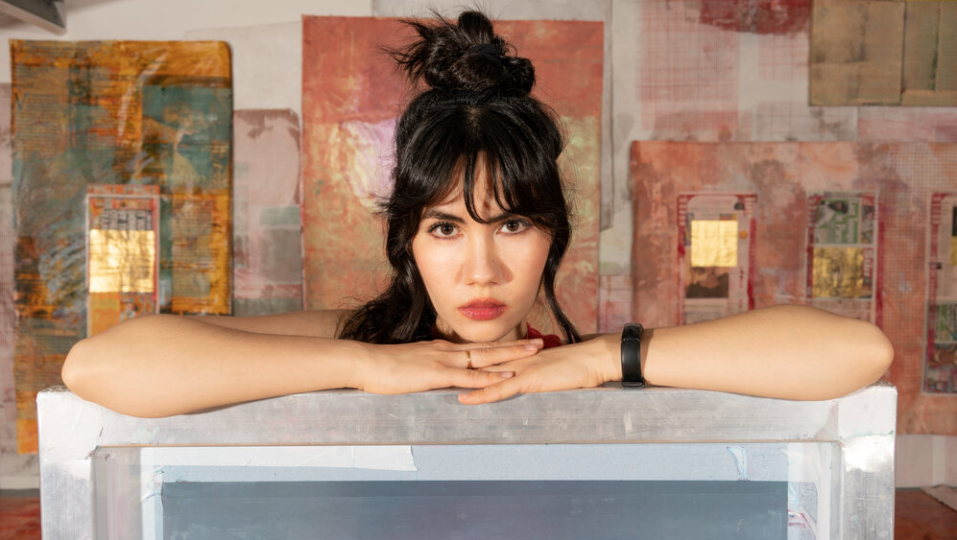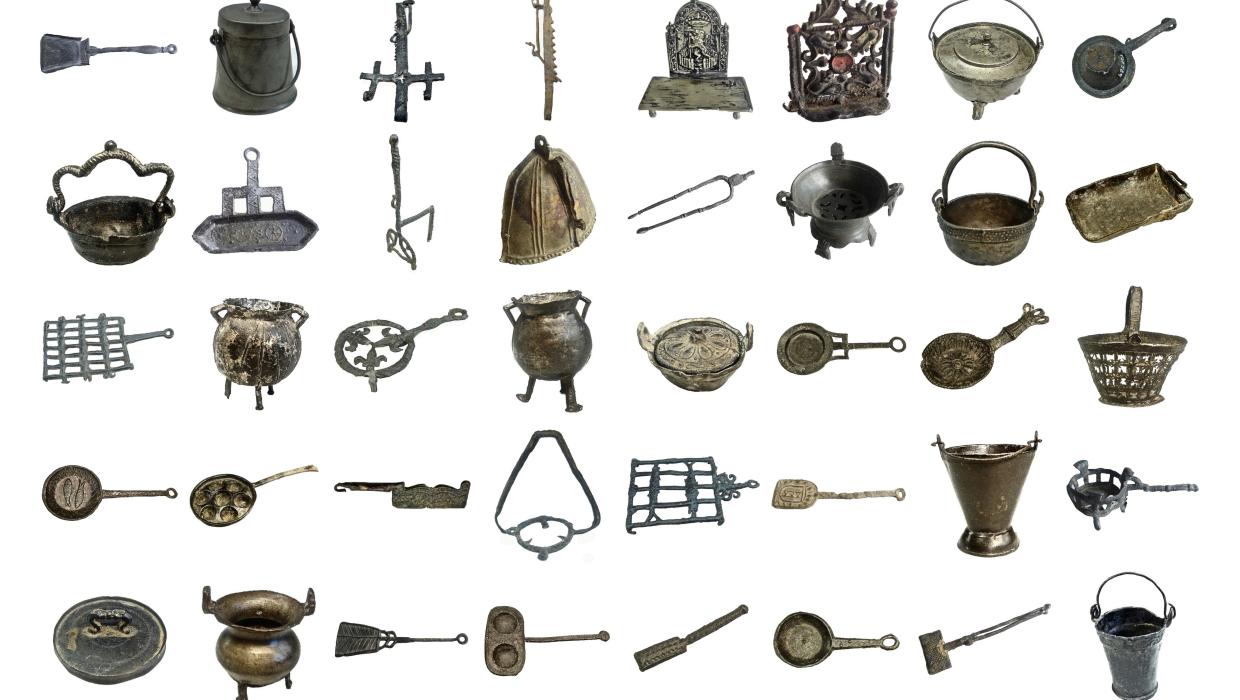

Alex Israel and Egg by Jeff Koons
The Baroque Egg with Bow (Orange/Magenta) was exhibited until the 24th of August 2012 in the museum’s entrance area. The enormous Easter egg was unveiled in February 2012 under the watchful eye of the press and curious visitors. Since June 2013, the work 'Sky Backdrop' by Alex Israel complemented the Barogue Egg.

The Egg
‘Baroque Egg with Bow (Orange/Magenta)’ (1994-2008) by the American artist Jeff Koons (1955) is an enormous ‘Easter Egg’ with a magenta bow. The giant object measures six m2, weighs two thousand kilos and is worth millions of Euros. Koons made ten eggs in a period of fourteen years. Each egg represents more than a year’s work by several experts. Rumours suggest that Koons almost bankrupted himself with the production of his eggs. Each work is executed to perfection, down to the very last detail. The coating of the eggs has been applied layer by layer by hand, in order to achieve as glossy an effect as possible. This technique is derived from the automotive industry.
Watch the film on the Egg arriving at the museum

Stimuli
Five of the ten eggs have a smooth surface: the so-called ‘Smooth Eggs’. The other five are called ‘Baroque Eggs’ and look as if they are packed in crumpled foil; the egg on show in Rotterdam is from this series. At first glance, the design seems banal, but refers to ideas such as (re)birth and fertility, recurring themes in the artist’s work. The egg, in common with other works by its maker, stimulates various senses. (No touching allowed)
No single egg belongs to a museum collection. All Koons’ eggs - with one exception, which is still in the possession of the artist - belong to important private collections, such as those of collectors François Pinault and Damien Hirst. Both the work by Israel and by Koons are on loan at Museum Boijmans Van Beuningen from collector Bert Kreuk.
Jeff Koons
Jeff Koons is famous for his enormous objects such as gigantic rabbits and religious pigs - several years ago, a scandal blew up in the Stedelijk Museum about this pig. Koons is a master of enlarging everyday objects to enormous proportions. His ‘new-pop-art type’ works are uncritical blow ups of the consumer society. In his creations, he brings together high and low culture in objects that are seductive, but at the same time überkitsch. His New York studio, where more than 80 people work, is reminiscent (as, too, is his work) of Andy Warhol and his Factory in the sixties.

Other works
Other well-known sculptures from the ‘Celebration Series’ are: ‘Balloon Dog’, ‘Hanging Heart’ and ‘Diamond’. This series also includes, in addition to sculptures, a number of oil paintings. The Celebration works have previously been shown in places such as Versailles (Paris), Neue National Galerie (Berlin) and on the roof of The Metropolitan Museum (New York).
Thanks to
With thanks to the Bert Kreuk Collection.



